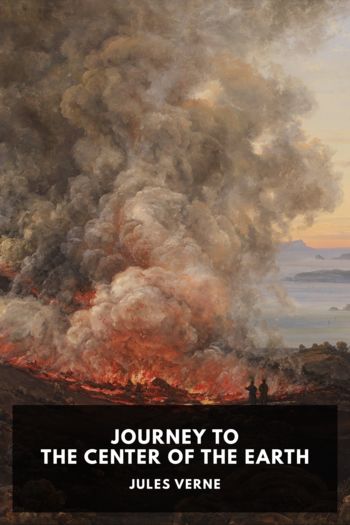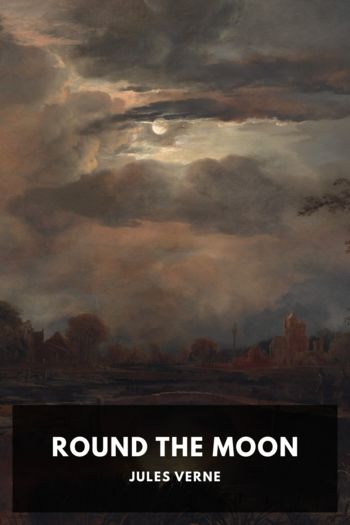Topsy-Turvy by Jules Verne (best book recommendations .txt) 📕

- Author: Jules Verne
Book online «Topsy-Turvy by Jules Verne (best book recommendations .txt) 📕». Author Jules Verne
“The idea followed by the Administrative Council of the N.P.P.A. and the object of which is to substitute a new axis for the old one is to be carried out by means of the recoil of a piece of ordnance fixed at a certain point of the earth. If the barrel of this device is immovably fixed to the ground it is not at all doubtful that it will communicate its shock over our whole planet. The engine adopted by the engineers of the Society is then nothing else but a monster cannon, the effect of shooting which would be absolutely nothing if it were pointed vertically. To produce its highest effect it is necessary to point it horizontally towards the north or south, and it is this last direction which has been chosen by Barbicane & Co. Under these conditions the recoil will produce a movement of the earth towards the north, a movement similar to that of one billiard ball touched very slightly by another.”
This was really just what the clever Alcide Pierdeux had predicted. As soon as the cannon has been fired off, the center line of the earth would be displaced in a parallel direction to that of the recoil. This would change the direction of the orbit somewhat, and consequently the duration of the year, but in such a mild way that it must be considered as absolutely free from bad results. At the same time the earth takes a new movement of rotation around an axis in the plane of the equator, and the daily rotation will then be accomplished indefinitely upon this new axis, as if no daily movement had existed previous to the shock. At present this movement is made around the lines of the poles, and in combination with the accessory force produced by the recoil there was created a new axis, the pole of which moves from the present to the amount of a quantity called “x.” In other words, if the cannon is fired at the moment when the vernal equinox—one of the intersections of the equator and the ecliptic—is at the nadir of the point of shooting, and if the recoil is sufficiently strong to displace the old pole 23 degrees, 28 minutes, the new axis becomes perpendicular to the direction of the earth’s orbit, the same as it is for the planet Jupiter.
What the consequences were expected to be we already know, as President Barbicane had indicated them at the meeting of the 22nd of December. But, given the mass of the earth and the quantity of momentum, which she possesses, is it possible to conceive a piece of ordnance so strong that its recoil will be able to produce a modification in the actual direction of the real pole, and especially to the extent of 23 degrees, 28 minutes? Yes, if a cannon or a series of cannons are built with the dimensions required by the laws of mechanics, or, in lieu of these dimensions, if the inventors were in possession of an explosive strong enough to impel a projectile with the necessary velocity for such a displacement.
Now, taking as a basis model the cannon of 27 centimetres of the French Marine Corps, which throws a projectile of 180 kilograms with an initial velocity of 500 metres a second, by giving to this piece of ordnance an increased dimension of 100 times—that is, a million times in volume—it would throw a projectile of 180,000 tons: or, in other words, if the powder had strength sufficient to give to the projectile an initial velocity 5,600 times greater than that of the old black powder used for a cannon the desired result would be obtained. In fact, with a velocity of 2,800 kilometres a second, a velocity sufficient to go from Paris to St. Petersburg in one second, there was no doubt that the recoil of the projectile, acting against the earth, would put everything again in a state of quietude. Well, extraordinary as it may appear, J. T. Maston and his associates had in their possession exactly this explosive, of a nearly unlimited power, and of which the gunpowder used to throw the ball of the Columbiad towards the moon gave but a faint idea. It was Capt. Nicholl who had discovered it. The substances which entered into its composition were only imperfectly entered in the notebook of Mr. Maston, and he merely named it “melimelonite.” All that was known was that it was formed by the reaction of a melimelo of organic substances and azotic acids. No matter what the explosive was, with the power which it possessed it was more than sufficient to throw a projectile weighing 180,000 tons outside of the earth’s attraction, and it was evident that the recoil which it would produce to the cannon would have the effect of changing the axis, displacing the North Pole 23 degrees and 28 minutes, bringing the new axis in the direction of the ecliptic, and, as a consequence of this, effecting all





Comments (0)